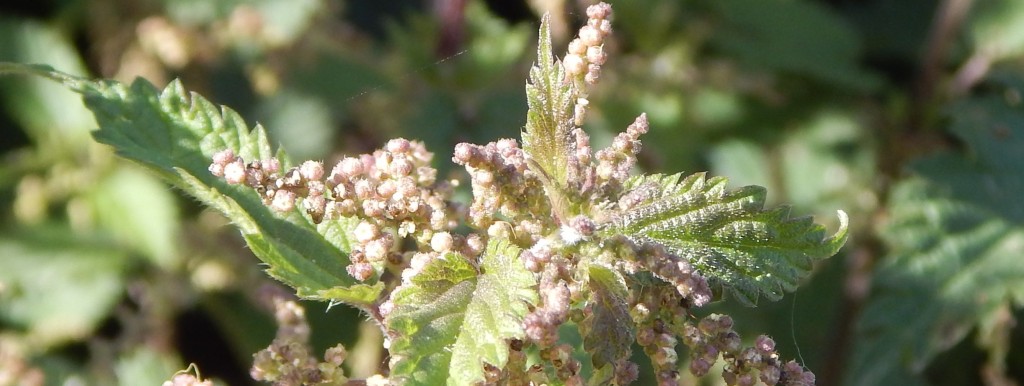
[353] Urtica dioica, Stinging Nettle
Introduction
Urtica dioica, the (Common) Nettle, is a common, widespread and well-known wildflower or weed, usually known as a Stinging Nettle.
It has separate male and female plants but the flowers are insignificant and may not be noticed.
Only five of its six subspecies have the stinging effect although the non-stinging subspecies, Urtica dioica galeopsifolia, is sometime considered to form its own species, Urtica galeopsifolia.
The word nettle is used for most species of Urtica and for many other unrelated plants that have mildly stinging effects or spines or prickles. Some plants that look like Urtica have names containing nettle, often suggesting that they are not nettles – such as False Nettles or [193] Deadnettles.
Taxonomy
Kingdom – Plants
Division – Vascular Plants
Class – Angiosperms (Flowering Plants)
Order – Rosales
Family – Urticaceae
Genus – Urtica
Scientific Name – Urtica dioica
Name
Nettle comes via Old English from Germanic roots, used for any mildly stinging plant. Urtica was the Latin name for this plant, coming from roots meaning burn or sting.
Dioica is the modern Latin form of dioecious (or diecious or diœcious,) coming from Ancient Greek di-oikia, meaning two-house. See [315] Red Campion.
Description
The stinging nettle is familiar to anyone who has done much walking in the countryside and it forms one of the main hazards in areas which have not been cleared. (The other one, of course, is [306] the Blackberry or Bramble.)
It has widely spreading rhizomes and can form bush-like areas of densely packed single stems, a metre or two in height.
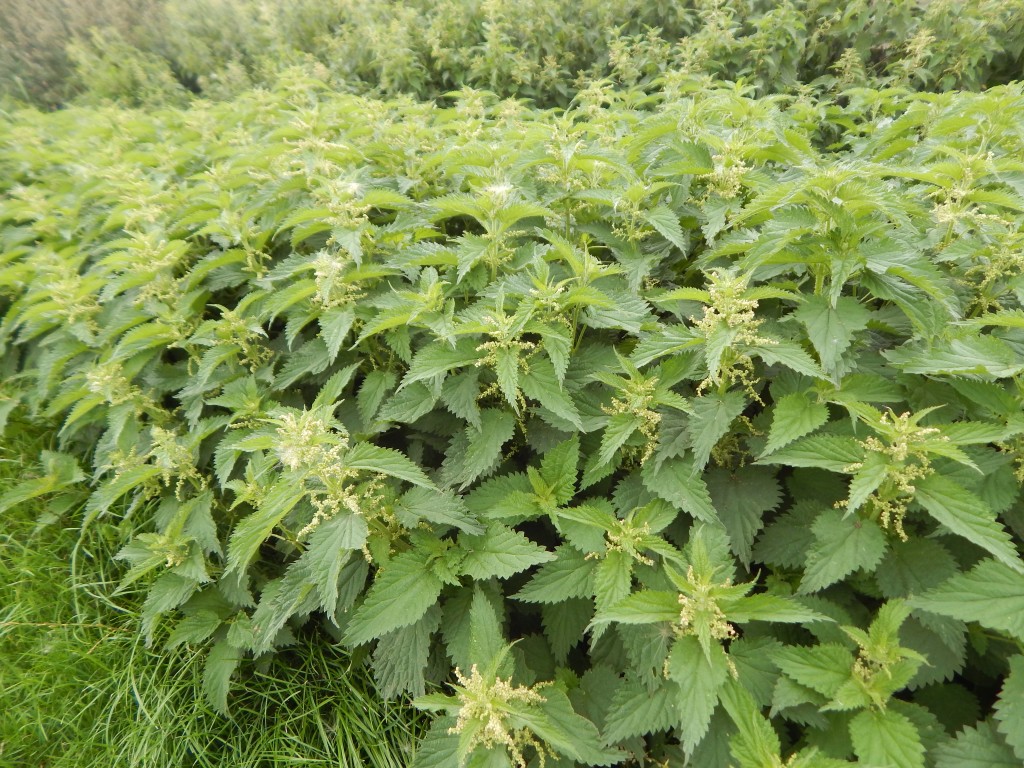
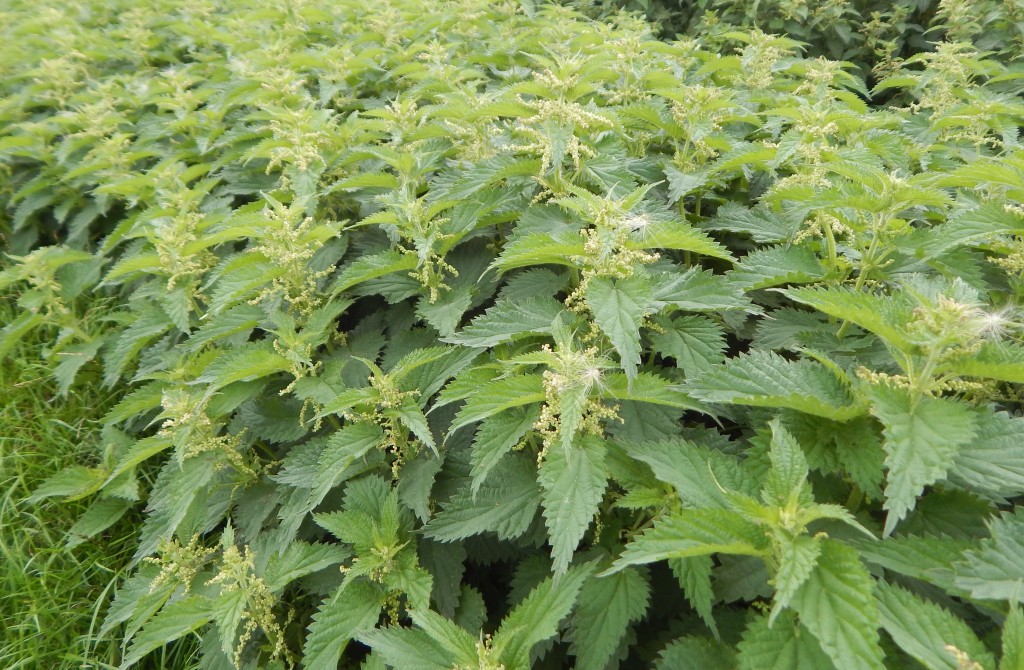
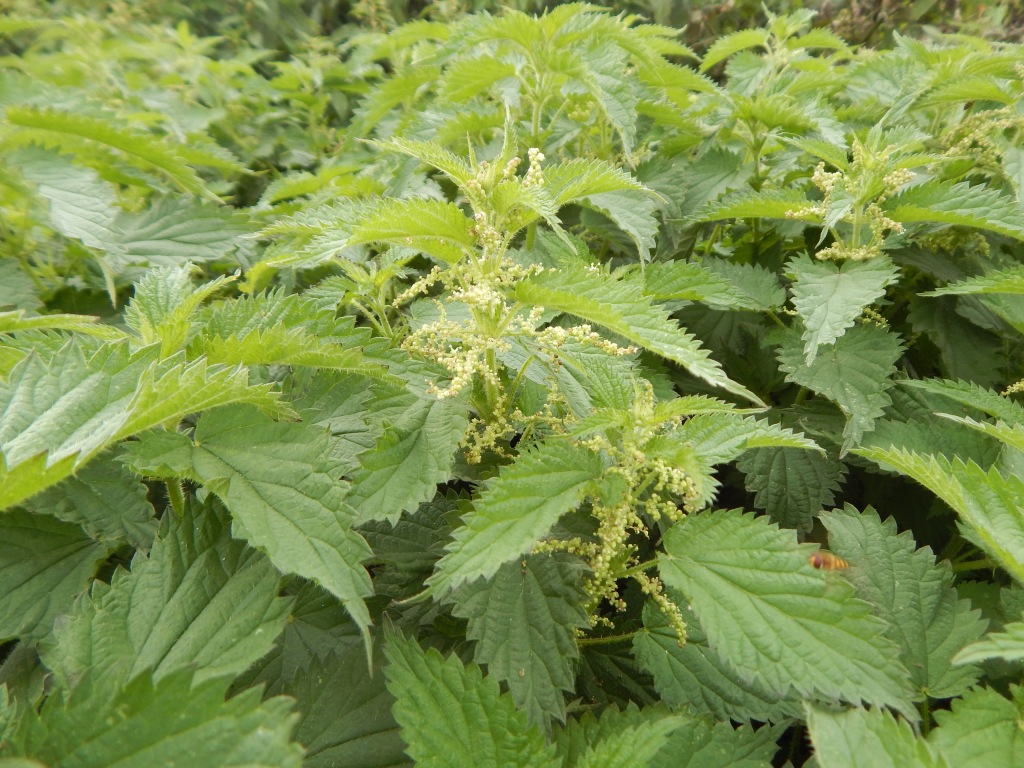
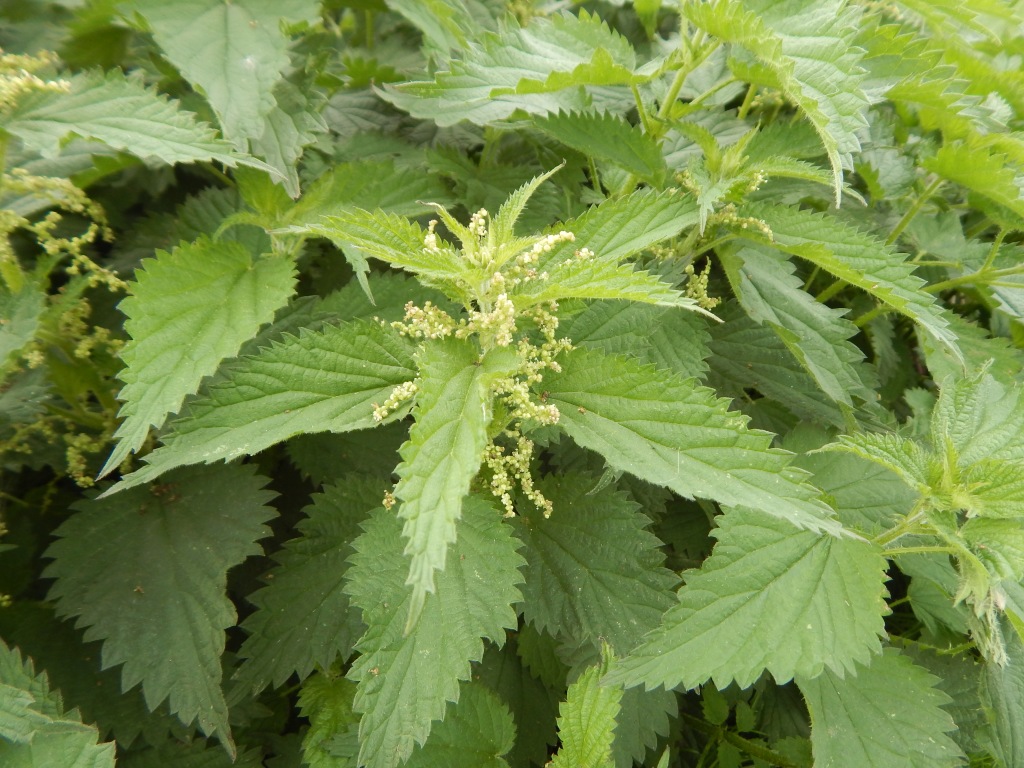
The easily recognizable soft, green leaves are strongly serrated and pointed – light green with marked vein structure when new, becoming darker.
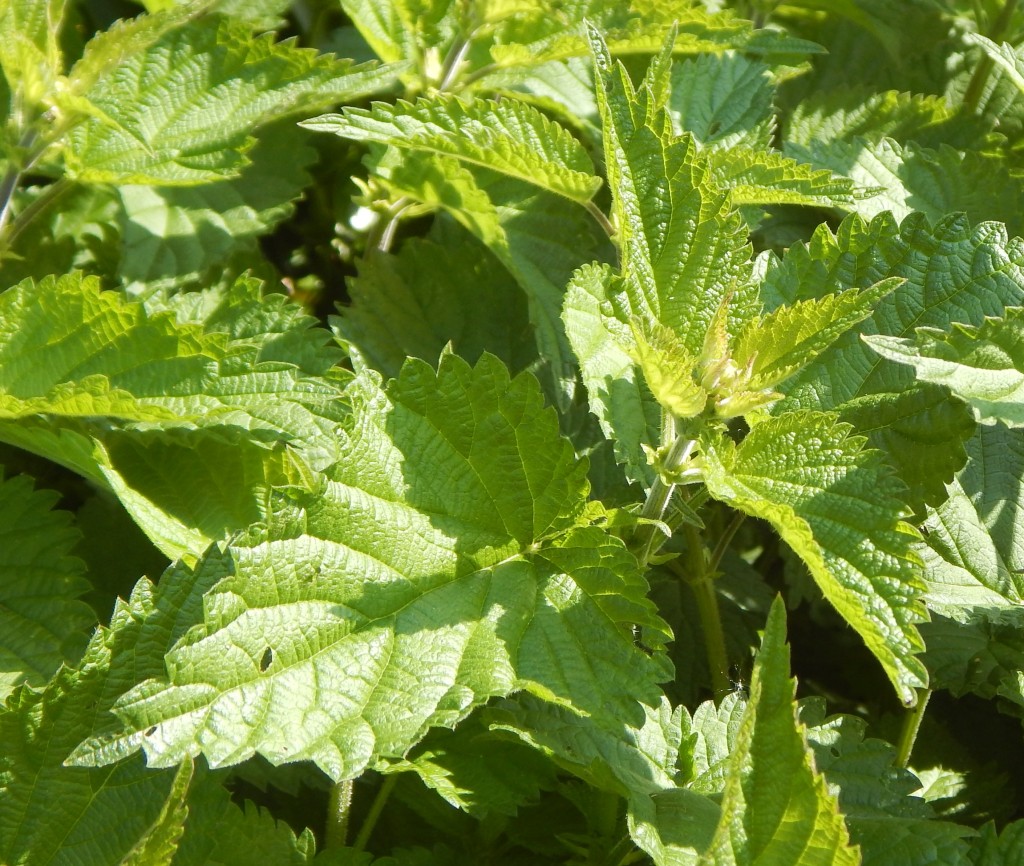

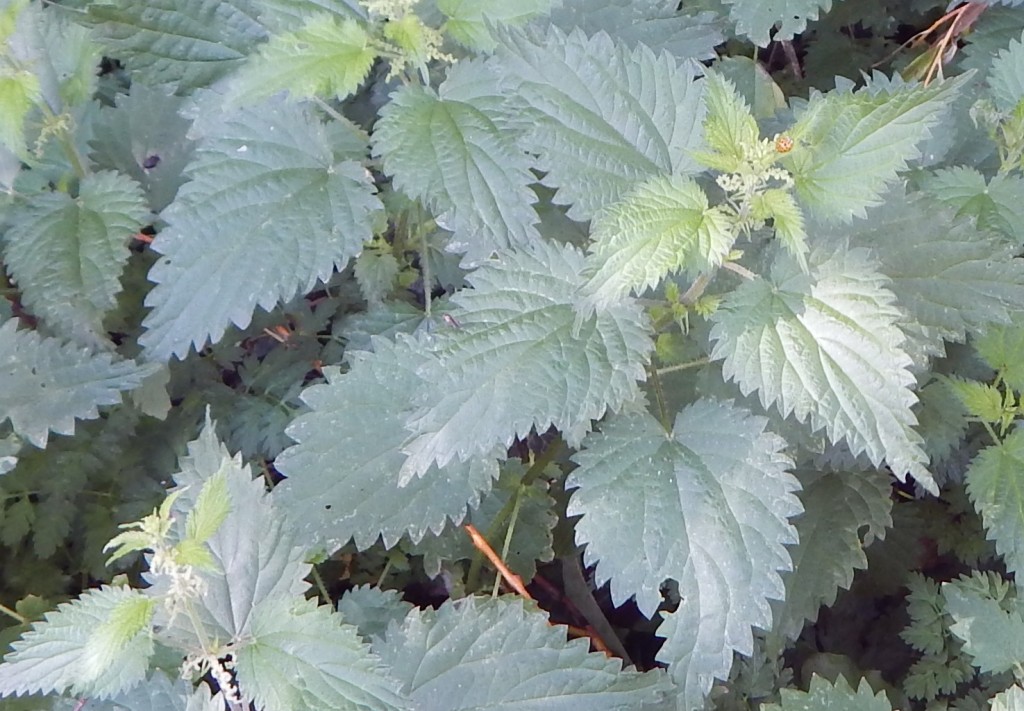

Even a light touch of any part of the plant leaves an immediate, lasting sensation of stinging. All of the stems and leaves are very hairy, covered with a mixture of stinging and non-stinging hairs. The tips of the stinging hairs come off, transforming into needles that inject several painful chemicals.
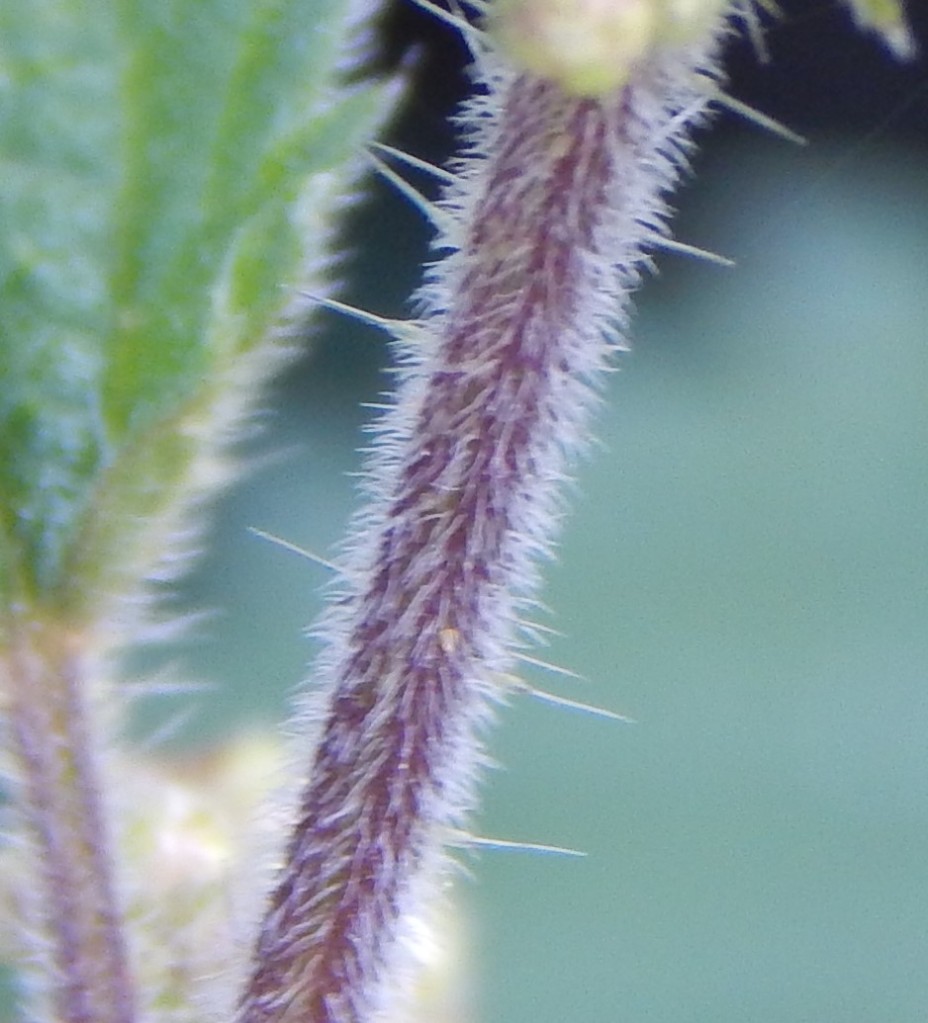
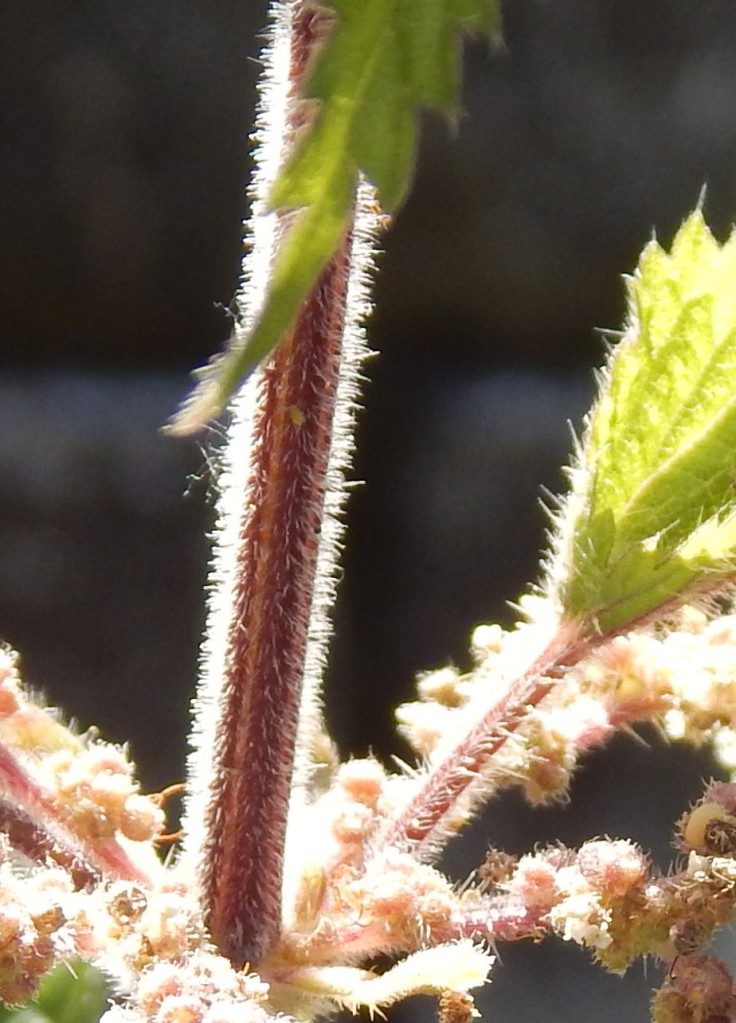
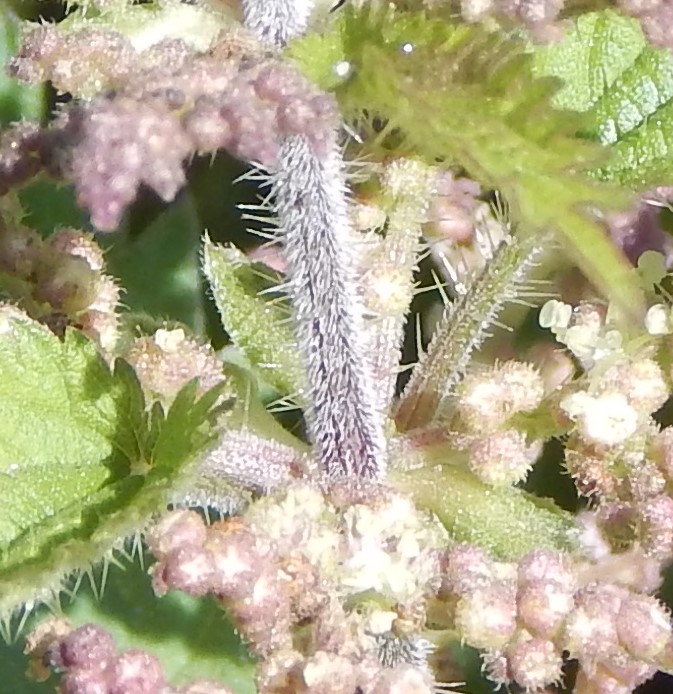
Botany has many words for the many different types of plant sexuality. Each plant can have male flowers, female flowers or hermaphrodite flowers, or any combination of the three types, and they can change between the possibilities every year or within years. The word dioecious is used for species with some plants having only female flowers and some having only male flowers, and this is so significant that it forms the species epithet of Urtica dioica.
[But, of course, just as it is not the only species of Urtica that is stinging, it is also not the only one that is dioecious.]
The tiny flowers appear at the top of each stem, almost unnoticed, in tight inflorescences. Male flowers are either yellow or purple, female flowers are green and white. They develop into equally insignificant tiny green fruits.
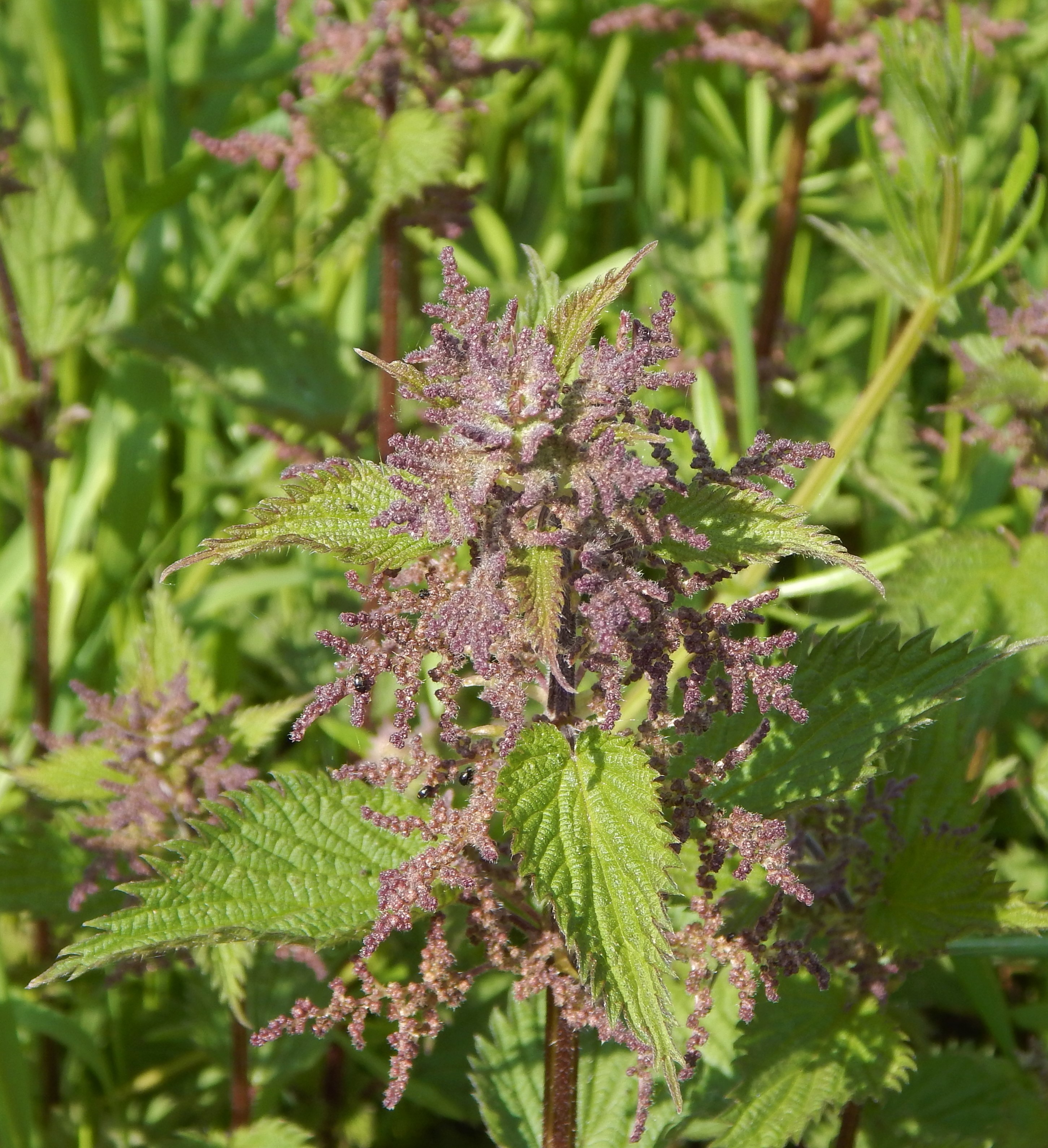




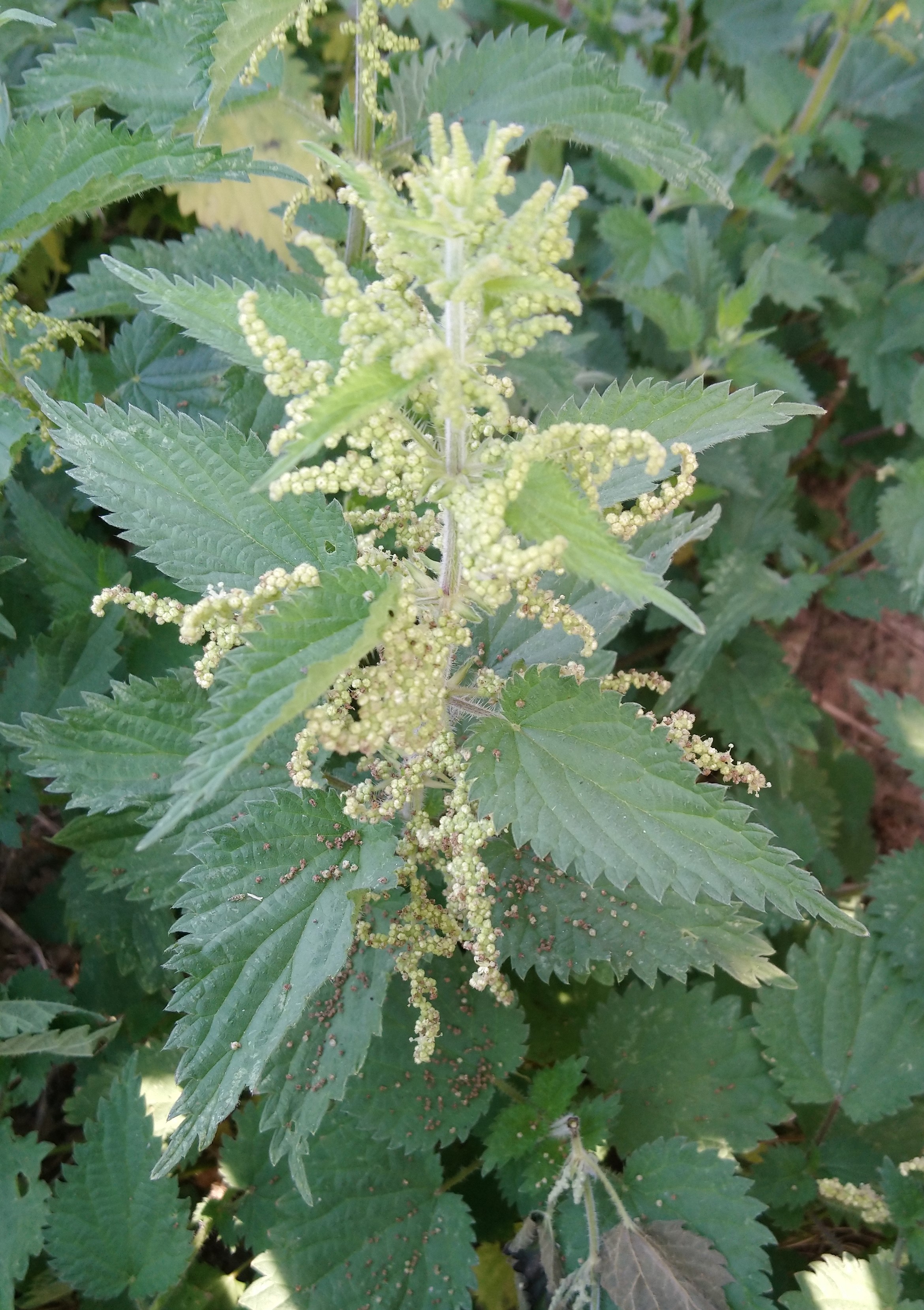
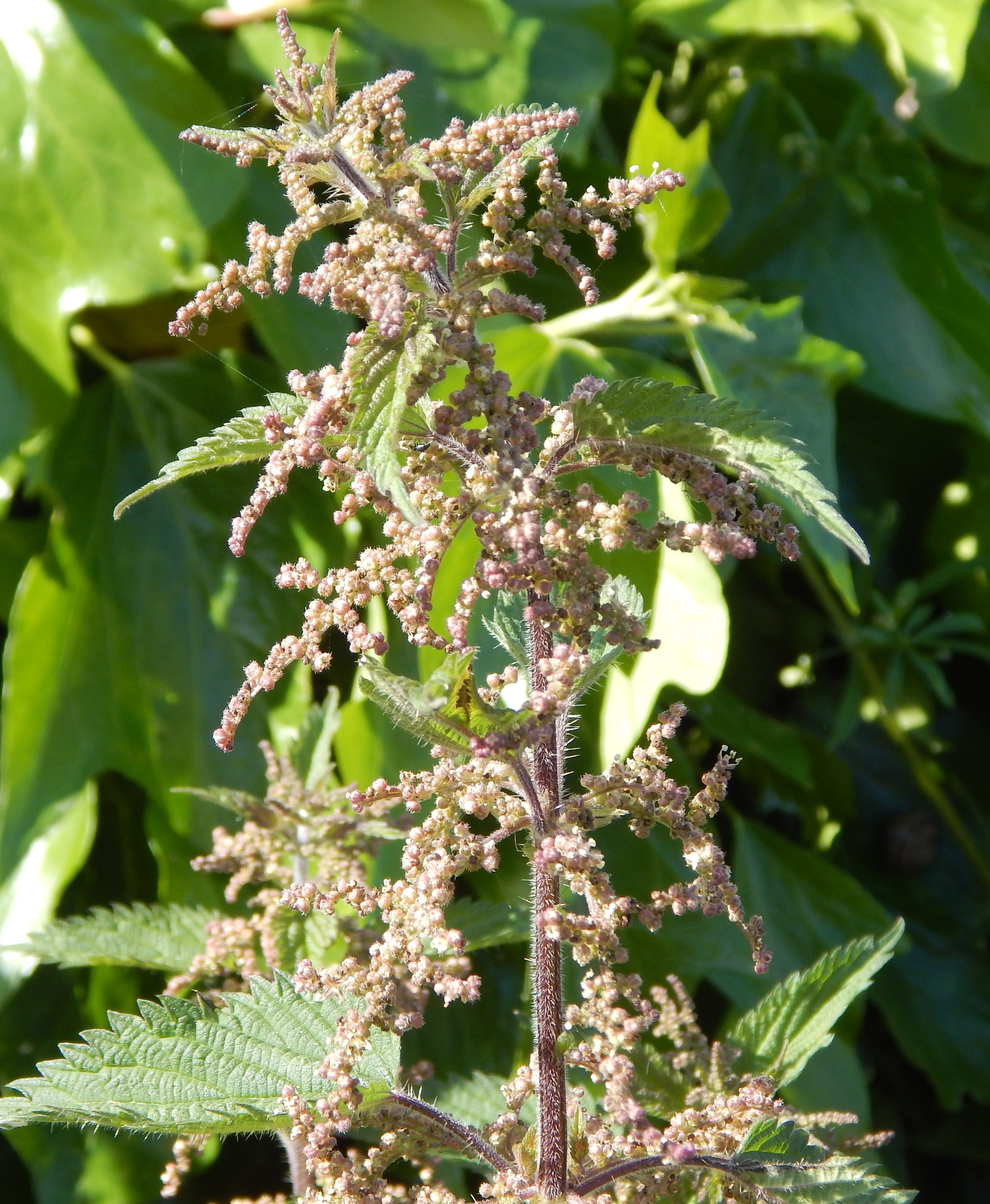

Habitat and use
Stinging Nettles are native to Europe and parts of Asia and North Africa. They are common in the countryside but are also found near human habitation and buildings.
The leaves can be eaten when cooked and dried leaves are used to make herbal tea.
It has been used in traditional medicine since Anglo-Saxon times and was believed to aid lactation in women. Flogging with nettles to produce inflammation was believed to be a remedy for rheumatism.
Stems of the plant have been used to make textiles and clothing for about 3 000 years in the same sort of ways as flax, which produces linen.
It is fed to laying hens to add yellow colour to their egg yolks.
It is host to several species of butterflies and moths, including [355] the Red Admiral and the aptly named [010] Aglais urticae, Tortoiseshell.

Other Notes
There is a widespread common belief that rubbing the leaf of a Dock plant (Rumex, related to Sorrel,) provides some relief against the stinging effects of Nettles. There is no evidence to support this but there may be some placebo effect.
Apart from a Christmas special, this is our last wildflower species.
